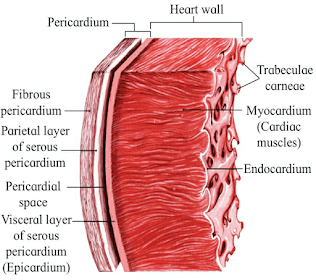
TYPES OF CLOSED CIRCULATORY SYSTEM In all vertebrates, higher molluscas and annelids, the blood is circulated all over the body through a network of blood vessels. In this type of circulation, blood flows within the blood vessels and does not come in direct contact with cells and body tissues. Exchange of material between blood and body tissues is through an intermediate fluid celled lymph. Blood flows with high pressure and contains respiratory pigments like haemoglobin for transportation of respiratory gases. Close circulation is of two types- single and double circulation. Single circulation In single circulation, the blood passes through heart only once during each cycle. ex. Fishes Deoxygenated blood is pumped from heart towards gills, where it undergoes oxygenation. This oxygenated blood moves towards various body parts, gets deoxygenated and returns back to heart for next cycle. The heart of Fish carries only deoxygenated blood, it also called 'Venous Heart'. Double Circ



